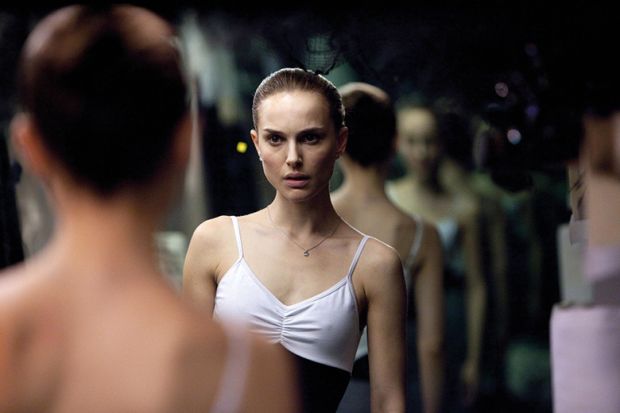In Darren Aronofsky’s Black Swan (2010), we watch Natalie Portman transform from an elegant, delicate ballerina into a volatile, contorted creature on the edge of madness. The story of the film is thus written on the body of its central performer, evoked through movement, gesture and sound. Such bodily manifestations, their aesthetic representation and thematic concordances are at the heart of Lindner’s fascinating book, which privileges an analysis not only of the representation of bodies in cinema, but their theoretical implications through a model of queer feminist analysis.
Indeed, as Lindner observes in her chapter on Black Swan, Aronofsky’s film deals with the physical and psychological breakdown of its heroine in ways that focus specifically on her struggles with her own gender and sexuality – precisely, her envy and desire for another ballerina. Compellingly, Lindner makes the case for Black Swan, as well as critically lauded contemporary films such as Céline Sciamma’s Girlhood (2014) and Jafar Panahi’s football comedy Offside (2006), as exemplary evocations of the queer feminist body in cinema, developing a complex framework to address “the affirmatively troubling potential of the female body and the cinematic modes of embodiment to which it gives shape”.
These are films invariably written about from broader cultural perspectives, or in the light of work such as Judith Butler’s seminal Gender Trouble (1990), but Lindner’s foregrounding of the role of embodiment and the queer thought of Sara Ahmed, in particular, whose groundbreaking work thinks through the notion of the queer phenomenological body, offers a vital perspective on the specificity of the queer film experience. While concerned with the representation of the body on screen, Lindner also delves more deeply into the nature of film viewing as an embodied encounter.
Lindner’s book is a valuable contribution to the school of thought in film theory that draws on theories of embodiment in order to evaluate the representation of the body on screen. Her work builds on Laura U. Marks’ The Skin of the Film: Intercultural Cinema, Embodiment, and the Senses (1999) and Vivian Sobchack’s The Address of the Eye: A Phenomenology of Film Experience (1992), but while these avoid questions of gender, Lindner puts them at the centre of her enquiry, fleshing out a new approach to queer film theory that introduces the rich philosophy of thinkers such as Ahmed to the study of sensuous spectatorship.
With sensitive attention to detail and to theoretical rigour, her book is distinctive and richly suggestive, important reading for those interested not only in film studies but in contemporary analyses of gender and feminist representation. Most intriguingly, Lindner’s implicit focus on the female dancer and footballer, across several films, offers a nuanced treatment of gendered movement or “kinaesthesia”, as she puts it. Such kinetic possibilities seem to characterise her interest in the cinematic bodies she analyses, as contact is made both on screen and between viewers and the texture, the very fabric, of the films themselves.
Davina Quinlivan is a senior lecturer in critical and historical studies at Kingston School of Art, Kingston University. She is the author of The Place of Breath in Cinema (2012) and Filming the Body in Crisis (2015).
Film Bodies: Queer Feminist Encounters with Gender and Sexuality in Cinema
By Katharina Lindner
I. B. Tauris, 272pp, £64.00
ISBN 9781784536244
Published 30 October 2017
Register to continue
Why register?
- Registration is free and only takes a moment
- Once registered, you can read 3 articles a month
- Sign up for our newsletter
Subscribe
Or subscribe for unlimited access to:
- Unlimited access to news, views, insights & reviews
- Digital editions
- Digital access to THE’s university and college rankings analysis
Already registered or a current subscriber? Login








